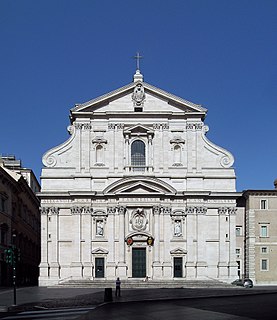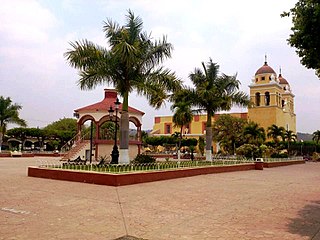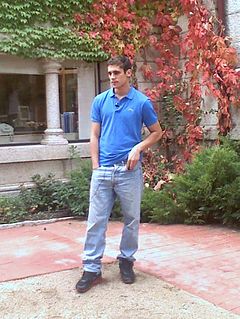| Church of la Purificación | |
|---|---|
| Native name Spanish: Iglesia de la Purificación | |
 | |
| Location | Escamilla, Spain |
| Coordinates | 40°32′57″N2°33′44″W / 40.549272°N 2.562315°W Coordinates: 40°32′57″N2°33′44″W / 40.549272°N 2.562315°W |
| Official name: Iglesia de la Purificación | |
| Type | Non-movable |
| Criteria | Monument |
| Designated | 1979 |
| Reference no. | RI-51-0004332 |
The Church of la Purificación (Spanish: Iglesia de la Purificación) is a church located in Escamilla, Spain. It was declared Bien de Interés Cultural in 1979.[ citation needed ]

Spanish or Castilian is a Romance language that originated in the Castile region of Spain and today has hundreds of millions of native speakers in the Americas and Spain. It is a global language and the world's second-most spoken native language, after Mandarin Chinese.

Escamilla is a municipality located in the province of Guadalajara, Castile-La Mancha, Spain. According to the 2004 census (INE), the municipality has a population of 105 inhabitants.

Spain, officially the Kingdom of Spain, is a country mostly located in Europe. Its continental European territory is situated on the Iberian Peninsula. Its territory also includes two archipelagoes: the Canary Islands off the coast of Africa, and the Balearic Islands in the Mediterranean Sea. The African enclaves of Ceuta, Melilla, and Peñón de Vélez de la Gomera make Spain the only European country to have a physical border with an African country (Morocco). Several small islands in the Alboran Sea are also part of Spanish territory. The country's mainland is bordered to the south and east by the Mediterranean Sea except for a small land boundary with Gibraltar; to the north and northeast by France, Andorra, and the Bay of Biscay; and to the west and northwest by Portugal and the Atlantic Ocean.
The church is best known for its Baroque bell-tower or Giralda. The church itself was built in a Renaissance style. The retablo dates from the 16th century.

Baroque architecture is the building style of the Baroque era, begun in late 16th-century Italy, that took the Roman vocabulary of Renaissance architecture and used it in a new rhetorical and theatrical fashion, often to express the triumph of the Catholic Church. It was characterized by new explorations of form, light and shadow, and dramatic intensity. Common features of Baroque architecture included gigantism of proportions; a large open central space where everyone could see the altar; twisting columns, theatrical effects, including light coming from a cupola above; dramatic interior effects created with bronze and gilding; clusters of sculpted angels and other figures high overhead; and an extensive use of trompe-l'oeil, also called "quadratura," with painted architectural details and figures on the walls and ceiling, to increase the dramatic and theatrical effect.

A retablo in Mexican folk art is a devotional painting, especially a small popular or folk art one using iconography derived from traditional Catholic church art. More generally retablo is also the Spanish term for a retable or reredos above an altar, whether a large altarpiece painting or an elaborate wooden structure with sculptures. Typically this includes painting, sculpture or a combination of the two, and an elaborate framework enclosing it. The Latin etymology of the Spanish word means "board behind". Aside from being found behind the altar, "similar ornamental structures are built and carved over facades and doorways", called overdoors.











